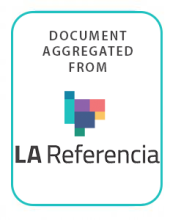Land Library
Welcome to the Land Portal Library. Explore our vast collection of open-access resources (over 74,000) including reports, journal articles, research papers, peer-reviewed publications, legal documents, videos and much more.
/ library resources
Showing items 1 through 9 of 18.The impact of climate change on drought main characteristics was assessed over Southern South America. This was done through the precipitation outputs from a multi-model ensemble of 15 climate models of the Coupled Model Intercomparison Project Phase 5 (CMIP5).
Land change in the Greater Antilles differs markedly among countries because of varying socioeconomic histories and global influences. We assessed land change between 2001 and 2010 in municipalities (second administrative units) of Cuba, Dominican Republic, Haiti, Jamaica, and Puerto Rico.
The identification of suitable models for predicting daily water flow is important for planning
This paper analyses the drought risk in argentine Pampean region using statistical results of soil water storage. These are calculated by daily soil water balance whose methodology has been tested using values obtained in situ.
Fluvial fill terraces preserve sedimentary archives of landscape responses to climate change, typically over millennial timescales.
Most sedimentary plains occupied by semiarid woody ecosystems have low groundwater recharge rates and high vadose zone salt accumulation.
The inability to monitor wetland drag coefficients at a regional scale is rooted in the difficulty to determine vegetation structure from remote sensing data.
The Paraná delta, growing at a rate of c. 2 km2 yr-1 since 6,000 yrs, is one of the most complete record of late Holocene in southern South America.
This paper analyses the climate change projected for the near and distant future in South America using MRI/JMA (Japanese Meteorological Agency) global model simulations with resolutions of 20 and 60 km.

